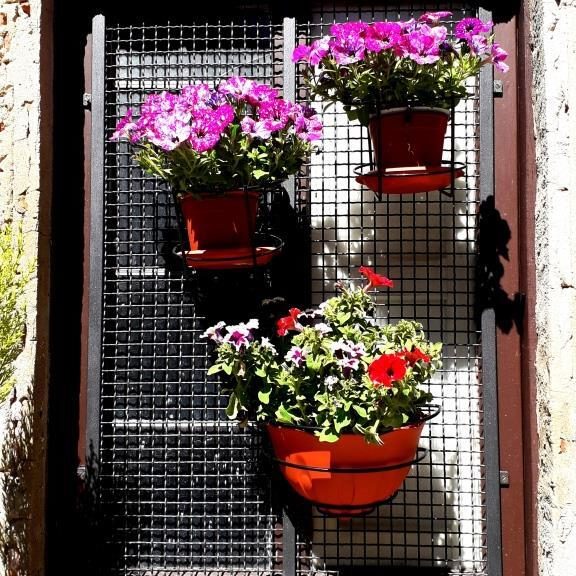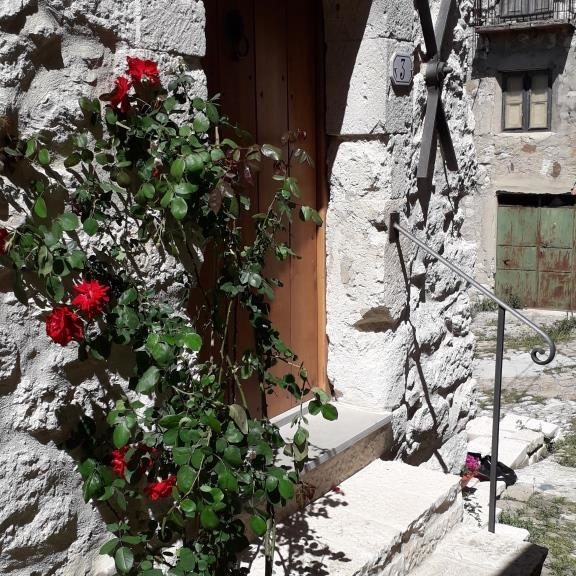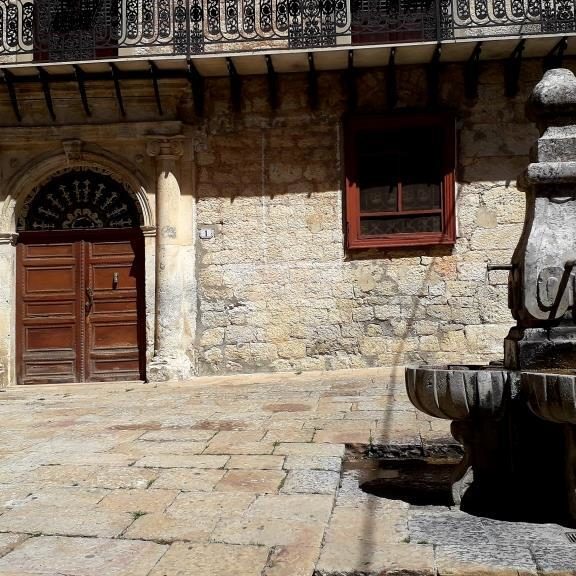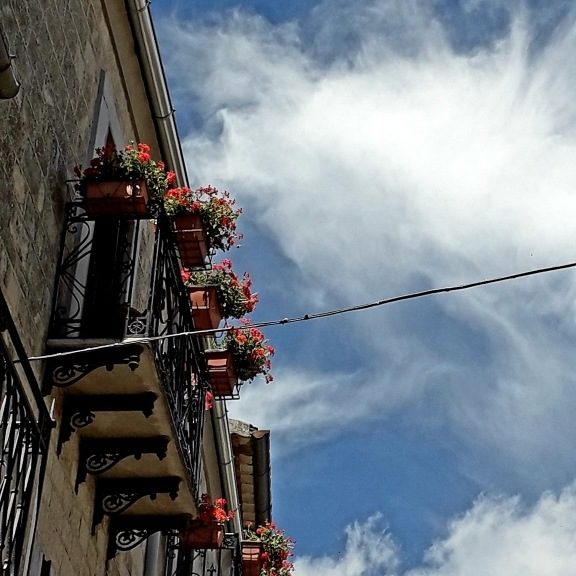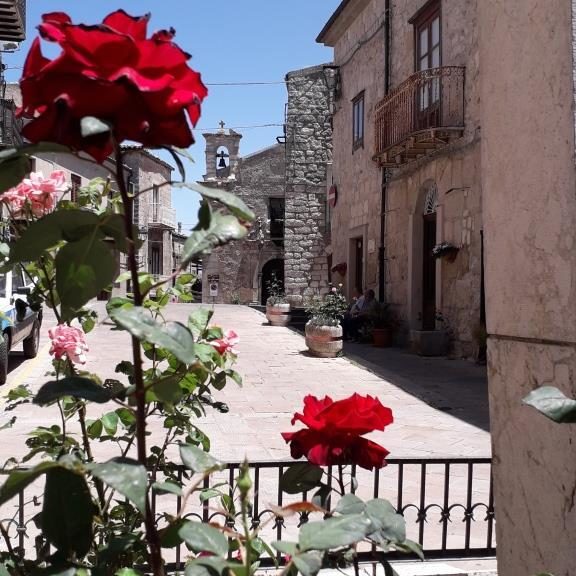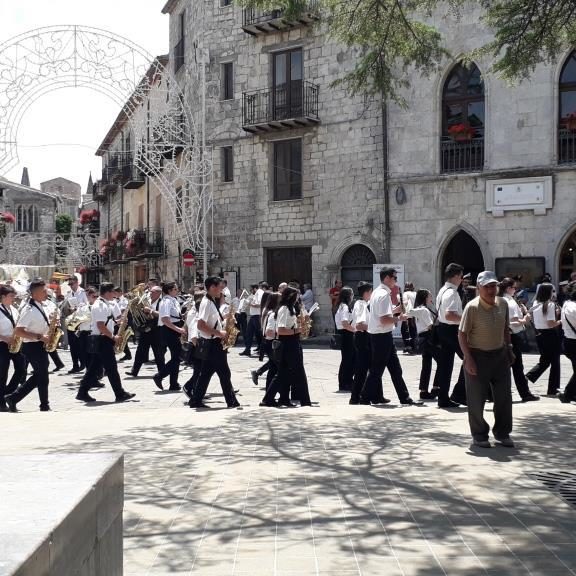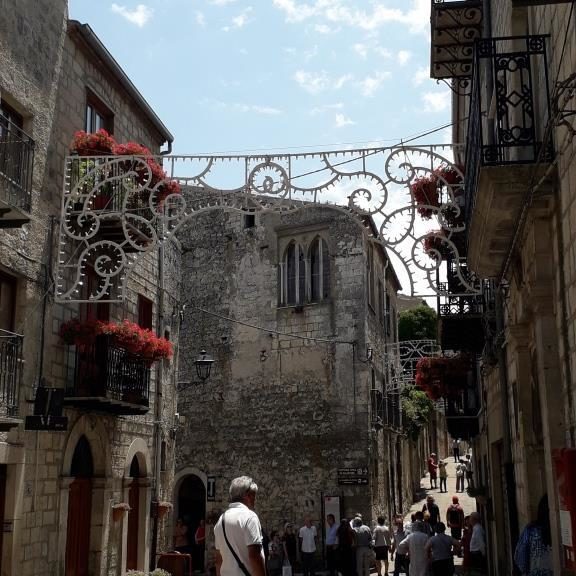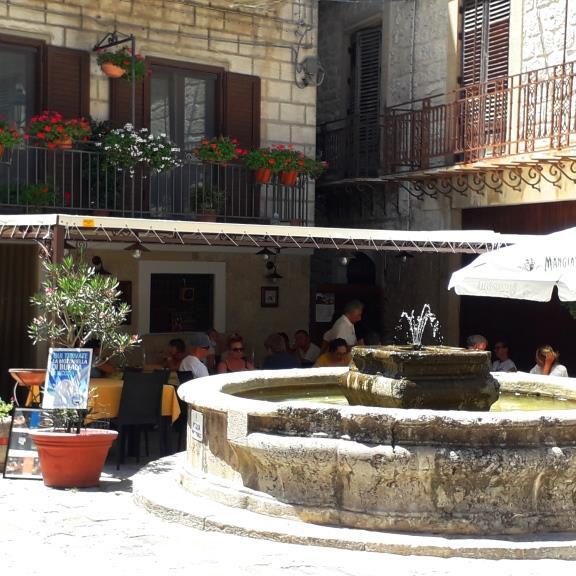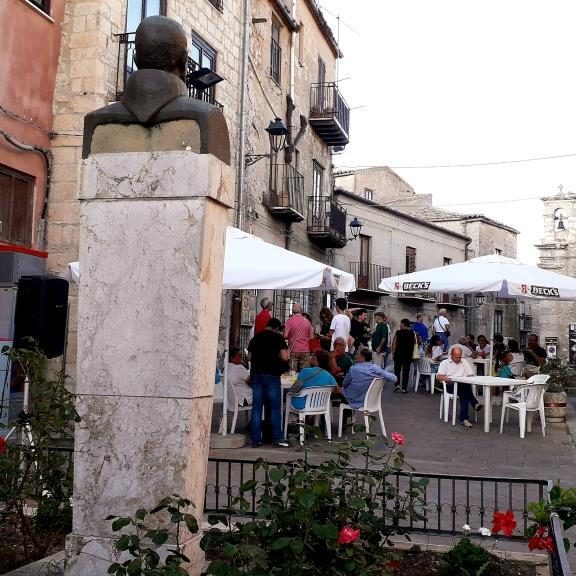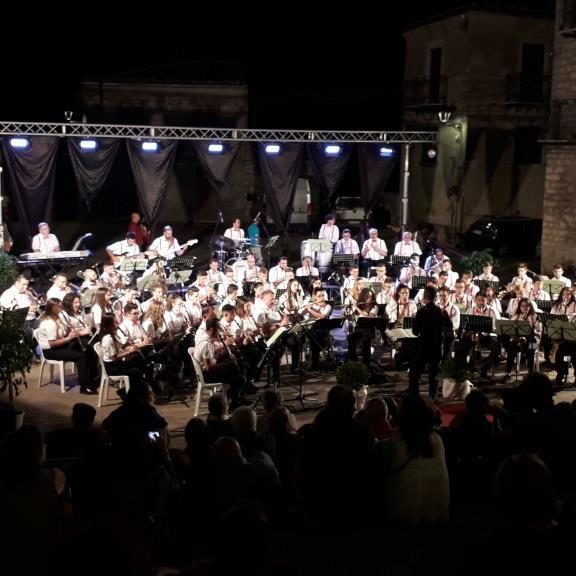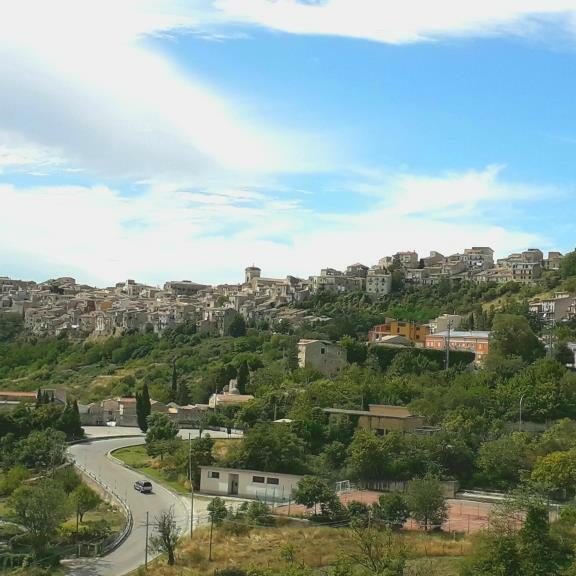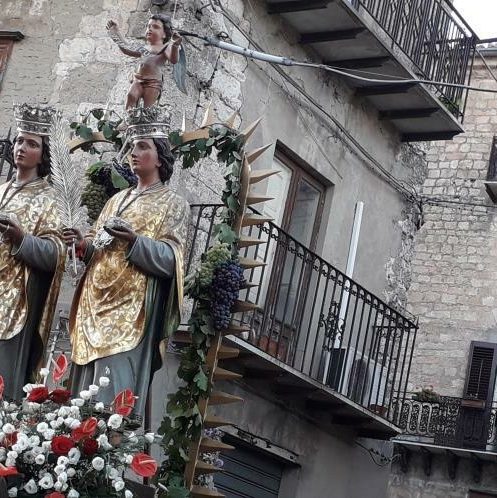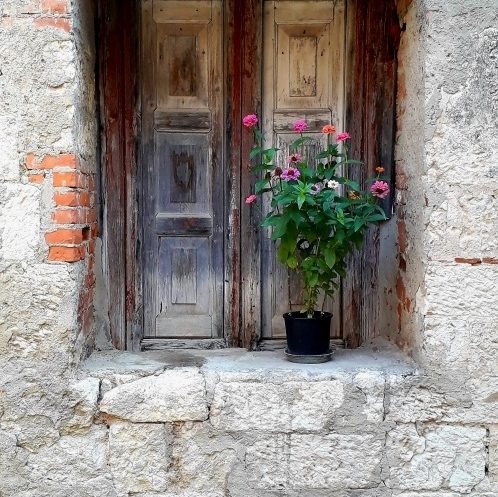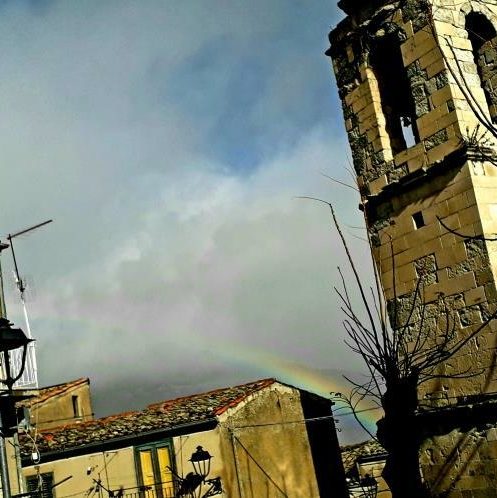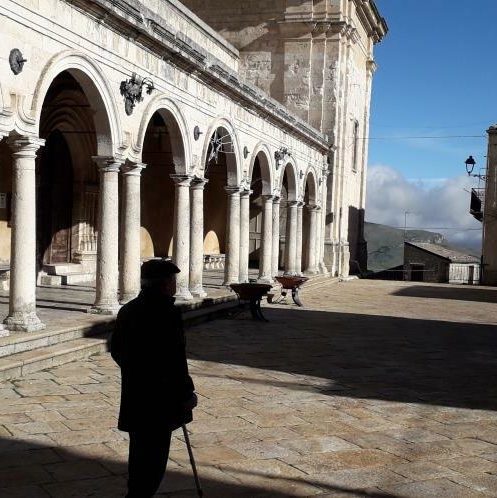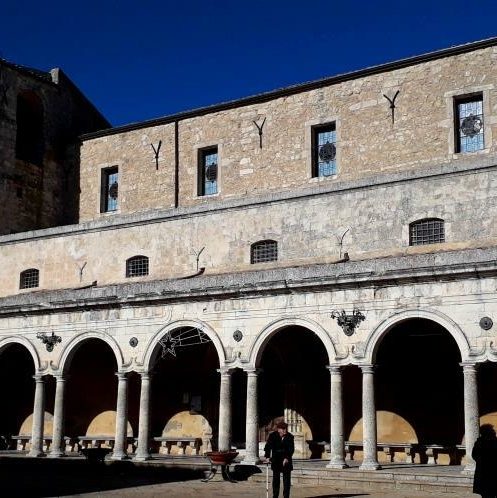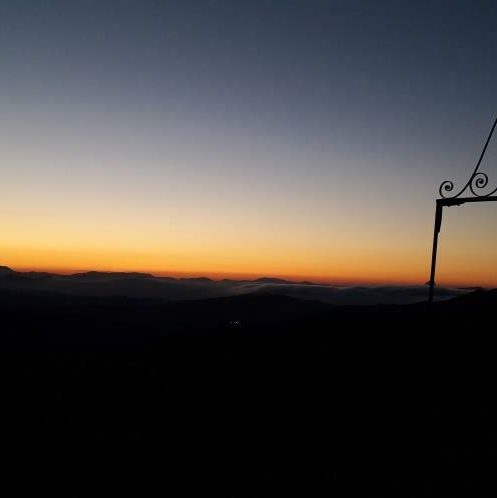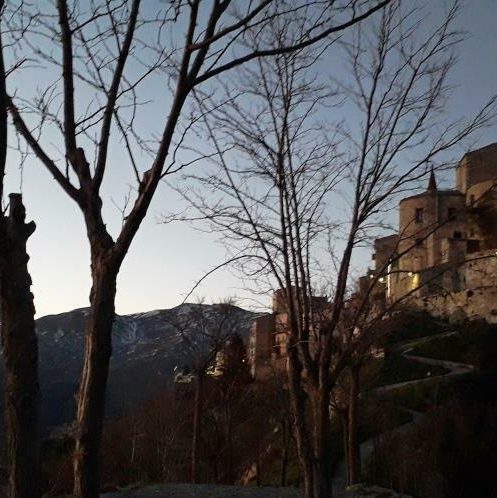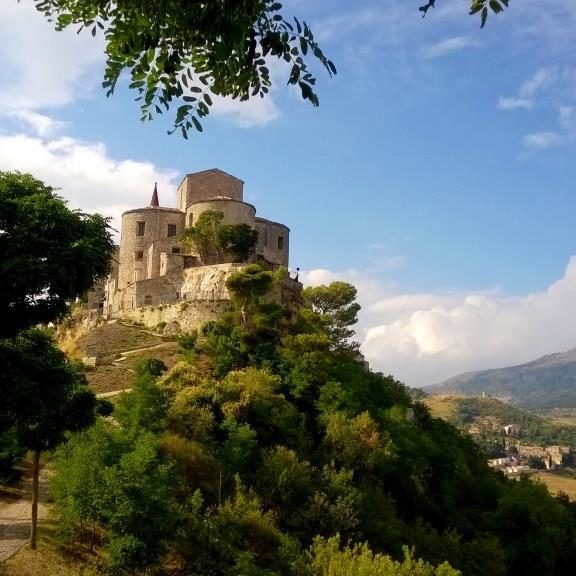
The mediaeval village of Petralia Soprana
From a height of 1.147 meters above the sea level, Petralia Soprana is among “the most beautiful villages in Italy”: in the extraordinary scenery of the heart of rural Sicily, in the Madonie Park, it offers the opportunity to experience a genuine journey.
A complete offer of grandeurs, activities to choose and combine together to turn a holiday into the best experience ever. Not far from the coast, close to the mountain and ski area of Piano Battaglia, its position is optimal for those who want to experience a complete holiday: winter and summer sports, naturalistic excursions and historical itineraries, walks in spiritual places, interesting appointments ranging from seasonal rural festivals to cultural events, festivals and folklore animating the village all year round.
In 2018 the village was awarded with the “Borgo dei Borghi” prize (the first among “the most beautiful villages in Italy).
It is likely, according to historians, that Petralia Soprana (Palermo) is the heir of the ancient Petra, founded by the Sicani delle Madonie. Conquered by the Arabs, it was called Batraliah – from Batra, “stone” and liah, “high”. The Normans renamed it Petra Heliae – stone of Elijah – to honor the Prophet.
You are in the heart of the Madonie and you’re on a natural balcony from wiche you can see Mount Etna in all its glory.
You are in the heart of the Madonie and you’re on a natural balcony from wiche you can see Mount Etna in all its glory.
But, let’s take things step by step…
There are three viewpoints: one is on Loreto – u castru – from which the view is on the Etna, Enna, Caltanissetta and the valley of the river Imera, onother one is on Carmine – u carmines – from which you see the western Sicily towards Palermo and the last one is in Piazza Duomo oriented towards east, looking at Gangi and embracing Mount Etna in the background.
Next to u castru, on the upper part of the village, there is the probable venue for the ancient fortification built first by the Sicani and then by the Romans, named Piazza Loreto. In Piazza Loreto, you can see the symmetrical façade and the majolica spiers of the Church of Santa Maria di Loreto, aggregated to the most famous sanctuary of Santa Maria di Loreto in “Le Marche”, rebuilt with a Greek cross plan in late baroque style.
Inside the church, you will be impressed by the beautiful marble altar by Giandomenico Gagini (from the seventeenth century, depicting four episodes of the life of Jesus) along with the sixteenth-century wooden sculptures of Saints Cosmas and Damian and the two statues of saints attributed to Filippo Quattrocchi di Gangi.
From Piazza San Michele, which has a central circular fountain named after the seventeenth-century church dedicated to the saint, we arrive to Piazza del Popolo. In the plaza, you will see the neo-Gothic town hall, formerly a convent of the Carmelites; Walking along the street Generale Medici, we will arrive to a small square, dedicated to the Friar Umile Pintorno da Petralia, a Capuchin who is the author of 33 carved wooden crucifixes spread in the south of Italy and abroad. He started this activity in 1623 , year of the Black Death in Sicily .
In the adjacent plaza Ruggero VII, there is the Oratory of the Souls in Purgatory (Oratorio delle Anime Purganti), with a big belfry. Next to the Oratory, in Piazza dei Quattro Cannoli, there is the Baroque fountain in Billiemi marble, the only source of water of the village up to the eighteenth century.
In Piazza Duomo, we see the spectacular architectural theater overlooked by the Cathedral dedicated to the Apostles Peter and Paul: a colonnade and two bell towers, one of them from Norman times with an Arabic style window, and the other from the eighteenth-century. On the facade, there is a wooden entrance door with Gothic-Catalan carved panels and, inside, three naves supported by twelve pillars representing the Apostles. In the right aisle, the canvas Deposition of Christ from the cross, ascribed to Josepe de Ribera called Lo Spagnoletto, Our Lady of the Angels by Gaspare Vazzano told The lame man of Gangi and the first crucifix made by Brother Umile da Petralia (1623), where the characteristics of his style are already visible: the size of the Christ and the extreme realism of his traits and gestures, such as the ajar mouth from which you can see the tongue and teeth; the deep wound on his side that reveals the entrails; the wide crown of thorns, that pierced Jesus’s brow, and an expression of suffering with which the author identifies himself, as he had problems in his left eye.
Let’s continue our tour with the Church of Salvatore: the only one in the Madonie with an elliptical plan, which, according to some, corresponds to that of the mosque, on which the Christian church was rebuilt by the Normans and consecrated. The church was enlarged in the second half of the eighteenth-century and it preserves interesting paintings and sculptures, including St. Joseph by the sculptor Filippo Quattrocchi.
Opposite the Norman Gate Seriy, the last of the six ancient entrances to the old town, there is the Church of San Teodoro. The current layout of the building dates back to 1759 but the bell tower is the transformation of one of the towers of the old medieval city walls of the historic center. Inside it has an interesting medieval sarcophagus.
Not far from the center, there is the Convent dei Frati Minori Riformati, built with the annexed church in 1611 by the will of some noblewomen. Friar Umile da Petralia spent the first years of novitiate in this convent. The magnificent façade of the church with its floral ornaments and bas-reliefs, recalls the exuberant decorative style of the Spanish Churrigueresque.
Nearby, you will find the eighteenth-century Villa Sgadari, one of the most beautiful baroque villas in Madonie. Inside an exhibition of carts and Sicilian puppets.
Walking around the village you should notice the different valuable palaces, such as, in Piazza Quattro Cannoli, Palazzo Pottino Marchesi di Irosa and Palazzo Vigneri, and in Piazza San Michele Palazzo Sabatini-Salvia.
Near the neighborhood Raffo, a large salt mine (miniera di salgemma) is still used for the production of the famous “salt of Sicily”. Inside you can visit the Salt Museum with a collection of salt sculptures created by artists from Worldwide.
Not far from the village, in the hamlet of the same name, there is the Church of the Trinity, which preserves a baptismal font of the eighteenth-century.
